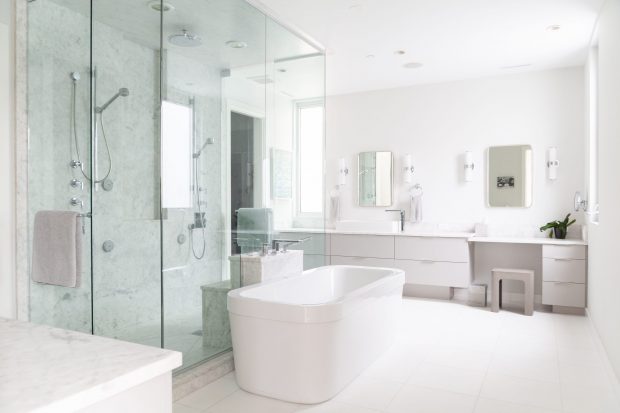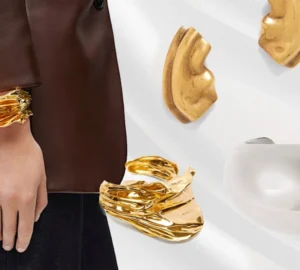When you go into a public restroom, either in your office, school, gasoline station, or at home, and you see an enclosure surrounding the toilet, it is called a “Bathroom partition.” Its purpose is to give the person using the bathroom stall the privacy they need. Bathroom partitions come in varying shapes, styles, colors, and materials. Bathroom partitions have been a helpful friend in securing and keeping individuals’ privacy safe in the past years. Naturally, they will continue doing the job of keeping people’s private businesses sheltered. Over the last century, like other things, they have also changed.

Over time, the evolution of bathroom partitions has ranged from either slowly in different aspects and rapidly in some. The shift began with the first types, which are considered basic ones like bathroom partitions made of wood or those made with powder-coated steel. Then, changes kept on taking place, progressing to various partitions that have developed over the last 40 years and are available in our market today. Some of these significant changes range from baked enamel, laminate, phenol, and stainless steel to the more complex aspects like providing greater privacy, innovative design, intricate ornamentation, and exceptional durability. Nowadays, bathroom partitions can even withstand mold and bacteria, dents, and scratches.
When choosing the correct bathroom partition to install, there are numerous factors to consider, like what materials are best suited to specific environments and buildings. Here are some points to note in helping you decide.
- Color: Color is one of the significant parts of selecting your bathroom partition as different hues affect mood. You should also consider if the color is complementary to the rest of your interior design or does it add to the style of your room.
- Design: Consider your preferences, like your preferred style and feel for the bathroom you are planning. This point will help you foresee the possible options available for you as some materials can offer more options for the partition’s color or style. For example, laminate is available in a variety of colors to suit almost any type. On the other hand, stainless steel may be pretty limited as they only offer limited styles mainly because of the material’s limitations.
- Traffic levels and customer expectations: If a customer needs the bathroom partitions inside or along with places that are influential, like office buildings, a specific partition is also suitable and available for them. For example, they might need to prioritize some critical things like quality and design. This means they might have no problems with the budget amount as long as the partition provides the maximum level of service it can. Suppose the bathroom partitions are for places with high-traffic and crowded spaces like public buildings, such as malls, churches, or schools. In that case, they should consider bathroom partitions made with durable and those made with an easy-to-clean material.
- Moisture levels: It’s important to note the level of humidity in the place of installation. Is the site moist? Are the bathroom partitions vulnerable to wetness and splashes of water? Suppose the location is in a water-heavy space or high-humidity area. In that case, it’s best to note what materials can withstand such conditions. When the place is somewhere near a body or artificial water space like beside a pool or showers, it would be a waste to use certain materials that are more susceptible to moisture damage. Suppose the location of your bathroom is within the perimeters of space with a high humidity level. In that case, it is advised and is your best bet to go with solid plastic or phenolic partitions instead of the laminate or powder-coated steel bathroom partition types.
Types of Bathroom Partitions
- Powder coat material: This type of bathroom partition material is one of the most “budget” friendly. Of the materials available in the market, it is the most commonly purchased toilet partition material. It is one of the best-selling bathroom partitions out there. These are the primary “metal” Powder Coated bathroom partitions. The central part of the process of this type of partition is powder coating. This is a high-tech process that involves coating the material with a rust-resistant coating.
- “HPL” High-Pressure Laminate Material – Plastic laminate is the second most popular material. It is now being re-branded by manufacturers as “HPL,” which stands for High-Pressure Laminate. This toilet partition material is slightly more expensive than Powder Coat Steel. Still, it comes in a much more comprehensive range of colors.
- Solid plastic/HDPE material: This material is one of the most long-lasting and durable varieties available on the market. This solid surface structure, also known as HDPE Toilet Partitions or polymer Toilet Partitions, with its homogenous (same color throughout the material) color, makes it a top choice for high-traffic restrooms.
- Compact laminate/phenolic material: Because of its strength, durability, and availability in various colors and textures, phenolic material is popular for bathroom partitions. This high-quality partition is created by soaking kraft paper in liquid resin, heating, and pressuring it to form a strong solid material.
- Stainless Steel Material – One of the most abundant materials used in toilet partitions. Even though this material has anti-rust and corrosion properties. Stainless steel bathroom partitions are the type to withstand and survive the harsh test of time if installed correctly.
While choosing the suitable material is essential, it is also necessary to note the project’s budget. In fact, in most cases, it is more beneficial to know the given budget first before choosing the type of material you would want to use. While some companies don’t have a specific budget to follow, this is not the case for everyone. For companies and projects that have a particular budget indicated, it is best to make the most out of the budget. To do so, research is the best course of action to help in deciding on the suitable type of bathroom partition. Of course, expert opinions are very much helpful as well. If the company provides someone who has excellent and substantial knowledge about bathroom partitions, it would be beneficial to listen to their advice.



